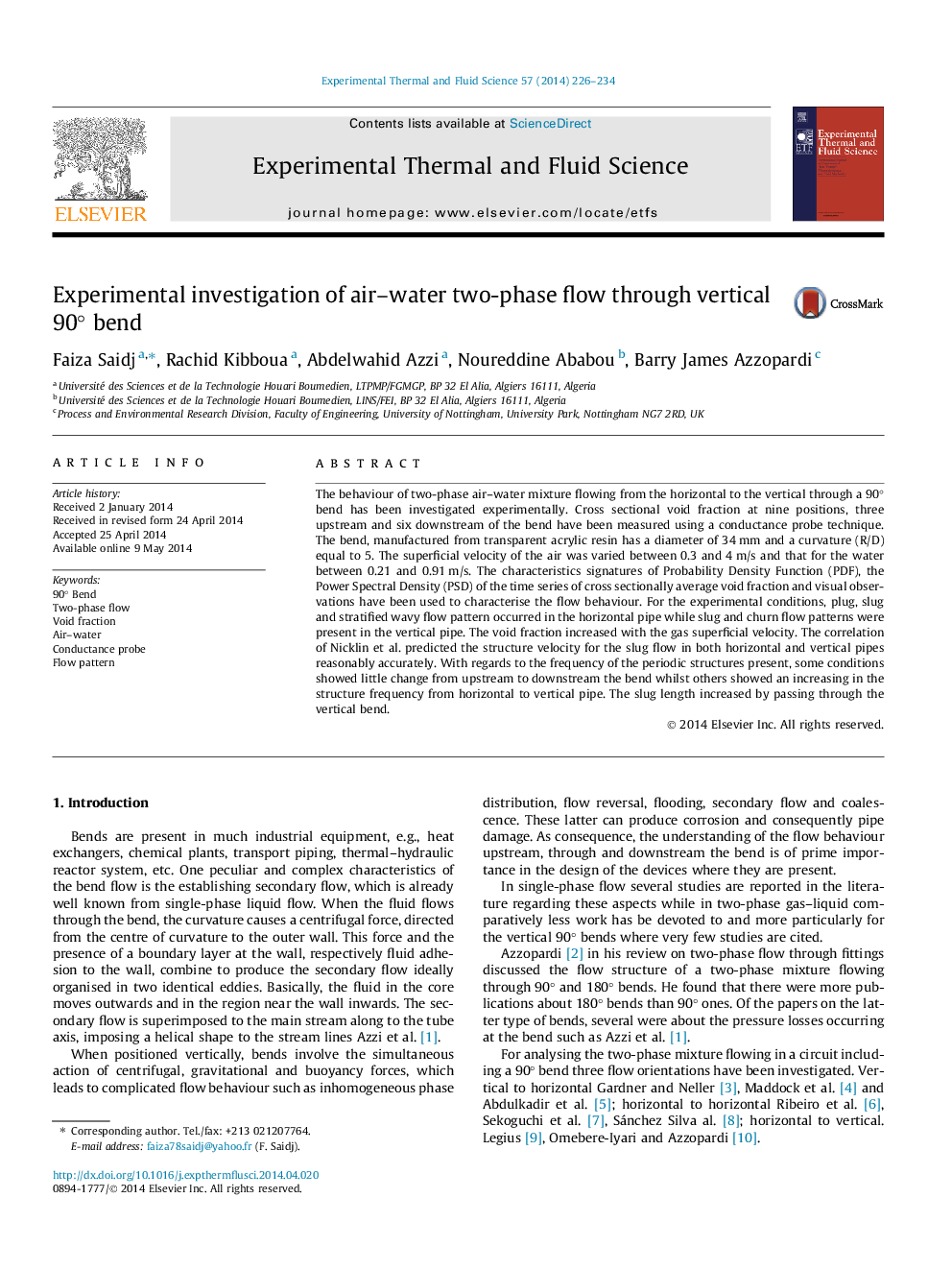| Article ID | Journal | Published Year | Pages | File Type |
|---|---|---|---|---|
| 651605 | Experimental Thermal and Fluid Science | 2014 | 9 Pages |
•Two-phase mixture flowing through a 90° bend has been analysed.•The characteristics of the mainly slug flows have been extracted.•Persistence of frequency of slugs from before to after the bend is reported.
The behaviour of two-phase air–water mixture flowing from the horizontal to the vertical through a 90° bend has been investigated experimentally. Cross sectional void fraction at nine positions, three upstream and six downstream of the bend have been measured using a conductance probe technique. The bend, manufactured from transparent acrylic resin has a diameter of 34 mm and a curvature (R/D) equal to 5. The superficial velocity of the air was varied between 0.3 and 4 m/s and that for the water between 0.21 and 0.91 m/s. The characteristics signatures of Probability Density Function (PDF), the Power Spectral Density (PSD) of the time series of cross sectionally average void fraction and visual observations have been used to characterise the flow behaviour. For the experimental conditions, plug, slug and stratified wavy flow pattern occurred in the horizontal pipe while slug and churn flow patterns were present in the vertical pipe. The void fraction increased with the gas superficial velocity. The correlation of Nicklin et al. predicted the structure velocity for the slug flow in both horizontal and vertical pipes reasonably accurately. With regards to the frequency of the periodic structures present, some conditions showed little change from upstream to downstream the bend whilst others showed an increasing in the structure frequency from horizontal to vertical pipe. The slug length increased by passing through the vertical bend.
